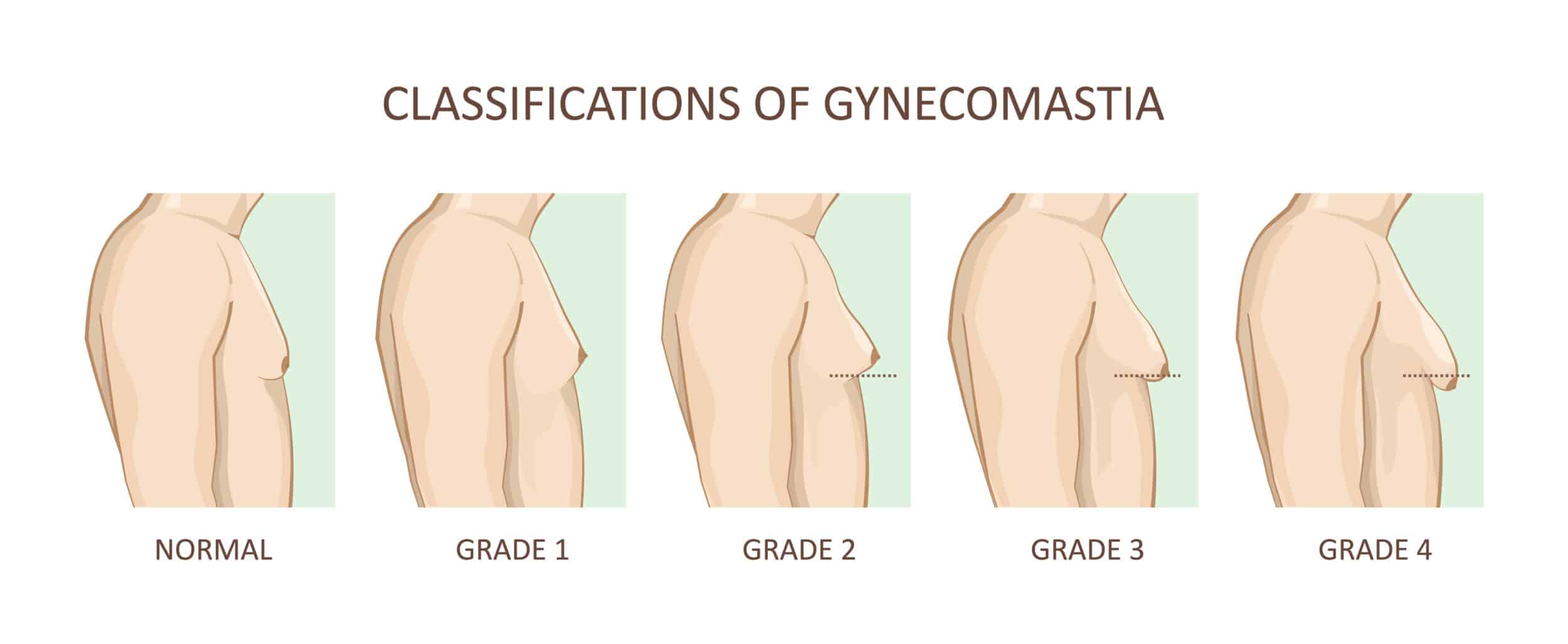Gynecomastia Before and After
by Admin
Posted on 10-12-2024 01:33 PM

Understanding Gynecomastia
Gynecomastia is not merely a cosmetic issue but a medical condition that requires understanding and sensitivity. It is caused by an imbalance of hormones in the body, specifically an increase in estrogen relative to testosterone. This hormonal imbalance can occur for a variety of reasons, including puberty, aging, certain medical conditions, and the use of specific medications. For individuals struggling with the symptoms of gynecomastia, which can range from mild breast tenderness to the full development of breast tissue, considering Gynecomastia surgery may be a viable option to address the condition and alleviate associated discomfort, as it can be tender and may have a nipple-areola complex.
Causes and Risk Factors
Hormonal Imbalance
The primary cause of gynecomastia is the imbalance of hormones in the body. During puberty, for instance, the levels of estrogen and testosterone can fluctuate, leading to the temporary development of breast tissue in some males. Similarly, during aging, the levels of testosterone may decrease, while estrogen levels remain stable, causing an imbalance.
Medical Conditions
Certain medical conditions can also lead to gynecomastia. These include hypogonadism, where the testes do not produce enough testosterone, and hyperthyroidism, where the thyroid gland produces too much thyroxine, leading to an imbalance in hormone levels.
Medications
The use of certain medications can also cause gynecomastia as a side effect. These include anabolic steroids, certain antibiotics, chemotherapy drugs, and drugs used to treat high blood pressure and heart conditions.
Diagnosis and Treatment Options
Diagnosing gynecomastia involves a physical examination and a review of the patient's medical history. In some cases, further tests may be required to rule out underlying conditions that could be causing the hormonal imbalance. Treatment options for gynecomastia depend on the underlying cause and the severity of the condition. For mild cases, treatment may not be necessary, especially if the condition is expected to resolve on its own, such as during puberty. However, for more severe cases, surgical intervention may be the most effective option.
Surgical Intervention
Surgical correction of gynecomastia, also known as male breast reduction, involves the removal of excess breast tissue. The procedure can be performed under local or general anesthesia, depending on the extent of the surgery. Techniques may vary, including liposuction to remove excess fat and surgical excision to remove glandular tissue. The choice of technique depends on the composition of the breast tissue and the surgeon's professional judgment.
Life Before Surgery
Living with gynecomastia can be incredibly challenging, both physically and emotionally. Individuals may experience discomfort, especially if the breast tissue is tender, and may feel self-conscious about their appearance. This self-consciousness can lead to avoidance of certain activities, such as swimming or changing in public, and can significantly impact one's quality of life. The emotional toll of gynecomastia should not be underestimated, as it can lead to feelings of embarrassment, low self-esteem, and even depression.
Life After Surgery
The transformation after surgical correction of gynecomastia can be profound. Not only does the physical removal of excess breast tissue improve the aesthetic appearance of the chest, but it also has a significant psychological impact. Individuals often report feeling more confident and comfortable in their own skin, leading to an improvement in their overall quality of life. The ability to engage in activities without the burden of gynecomastia can be incredibly liberating, allowing individuals to live more freely and authentically.
Recovery and Post-Surgical Care
The recovery process after gynecomastia surgery is crucial for achieving the best possible outcomes. Patients are typically advised to avoid strenuous activities for several weeks and may need to wear a compression garment to support the chest during the healing process. Follow-up appointments with the surgeon are essential to monitor the healing progress and address any concerns or complications that may arise.
Conclusion
Gynecomastia is a condition that affects not just the body but also the mind and spirit. The journey from living with gynecomastia to undergoing surgical correction can be life-changing. While the decision to undergo surgery is personal and should be made after careful consideration and consultation with a medical professional, the potential benefits for many individuals are undeniable. With the right support and care, individuals can look forward to a more confident and comfortable life after surgery.
FAQs
What are the common causes of gynecomastia?
Gynecomastia is commonly caused by hormonal imbalances, certain medical conditions, and the use of specific medications.
How is gynecomastia diagnosed?
Diagnosis involves a physical examination and a review of the patient's medical history, with further tests potentially required to rule out underlying conditions.
What are the treatment options for gynecomastia?
Treatment options depend on the underlying cause and severity of the condition, ranging from no treatment for mild cases to surgical intervention for more severe cases.
Can gynecomastia surgery be covered by insurance?
In some cases, if gynecomastia is causing significant physical discomfort or psychological distress, insurance may cover part or all of the surgery costs. However, this varies widely depending on the insurance provider and the specific circumstances of the case.
How long does it take to recover from gynecomastia surgery?
The recovery time can vary but typically involves avoiding strenuous activities for several weeks and wearing a compression garment to support the chest during the healing process.
Are the results of gynecomastia surgery permanent?
The results of gynecomastia surgery are generally long-lasting, but factors such as significant weight gain or certain medical conditions can potentially lead to the recurrence of breast tissue over time.
Michael Law MD Aesthetic Plastic Surgery
10941 Raven Ridge Rd #101,
Raleigh, NC 27614,
919-256-0900
